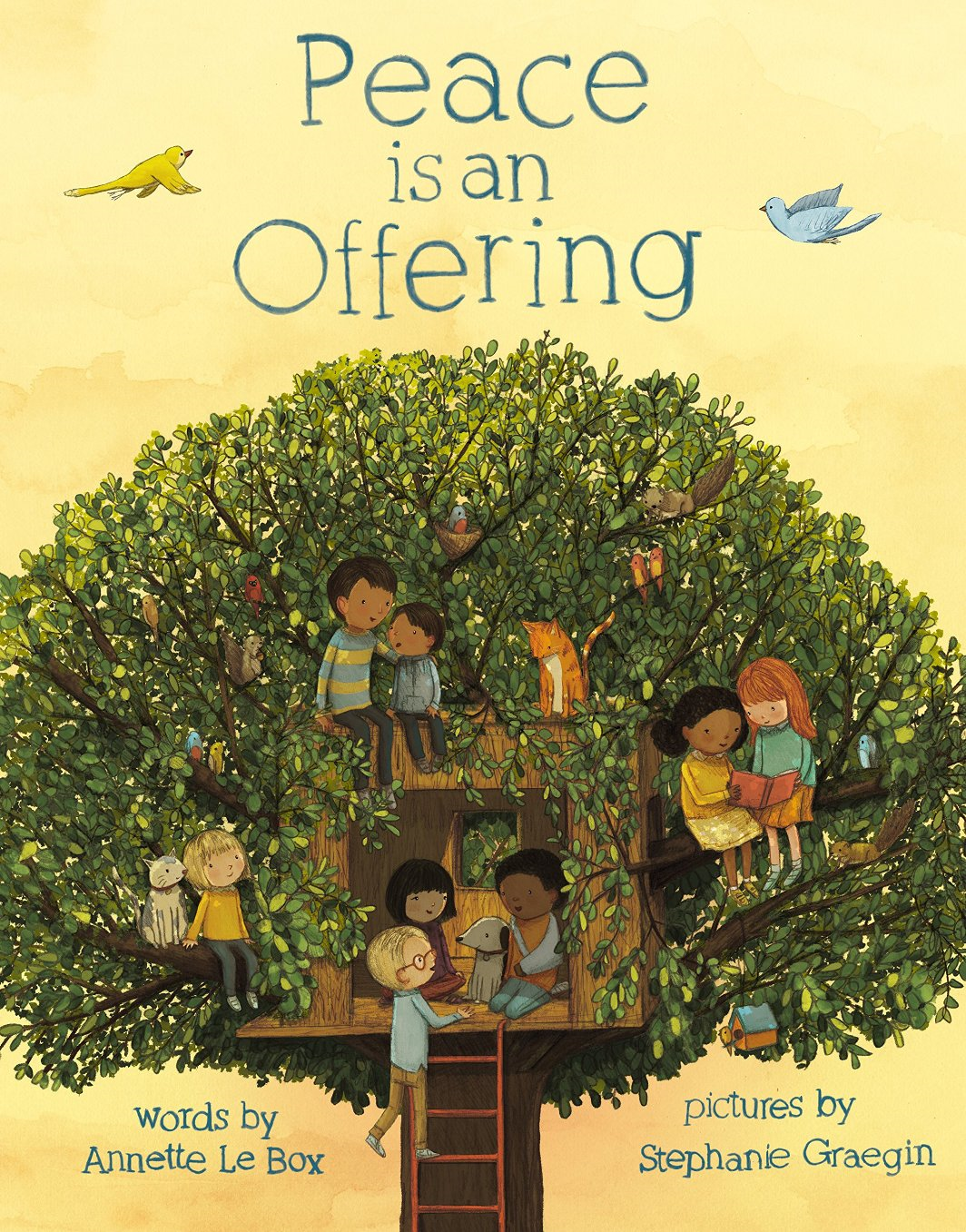 by Annette LeBox
by Annette LeBox
Through illustrations and simple rhyming text, characters show different ways that peace can be found, made and shared.
Strategies/Skills Used
Reading Strategy 1: Access background information.
Reading Strategy 2: Predict what will be learned or what will happen.
Reading Strategy 3: Figure out unknown words.
Reading Strategy 6: Connect what you read with what you already know.
Reading Strategy 7: Determine the most important ideas and events and the relationship between them.
Reading Strategy 10: Summarize what has been read.
Writing Skill 2: I organize my ideas based on my purpose for writing.
 TEACHING THE ACTIVITY: PRE-READING
TEACHING THE ACTIVITY: PRE-READING
 (1) Use the instructional strategy Graffiti from Beyond Monet, place students in groups of three or four and provide them with a large piece of paper with the following topics in the middle: What does peace look like? What does peace sound like? What does peace feel like? What is peace? What are examples of peace offerings?
(1) Use the instructional strategy Graffiti from Beyond Monet, place students in groups of three or four and provide them with a large piece of paper with the following topics in the middle: What does peace look like? What does peace sound like? What does peace feel like? What is peace? What are examples of peace offerings?
(2) Give students 30 seconds to think and then 60 to 90 seconds to individually, but simultaneously, record their ideas anywhere on the paper.
(3) Rotate each group to a different piece of paper and repeat until each group has had a chance to answer each question.
(4) Have each group work together on the question that is now in front of them to decide on the two or three most important ideas. Have each group report their findings out loud to the whole class.
 (5) Using a large-version of the Graphic Organizer Semantic Mapping/Webbing #1, record the most important ideas from each question/group up on the board for the whole class to refer to during the lesson.
(5) Using a large-version of the Graphic Organizer Semantic Mapping/Webbing #1, record the most important ideas from each question/group up on the board for the whole class to refer to during the lesson.
 TEACHING THE ACTIVITY: DURING READING
TEACHING THE ACTIVITY: DURING READING
(6) Introduce students to the book by using the Picture Walk. Show the front and back covers and ask students to describe what they see. Direct students’ attention to important recurring words or images. Allow the concepts of peacefulness and inclusiveness that are shown on the covers to connect to students’ own experiences.
(7) Ask students to predict what the author thinks peace is, based on the visual of the front cover of the book.
(8) Read the book Peace Is an Offering. Pause every few pages to ask students if what is on the page is an example of what peace “looks like,” “sounds like” and “feels like.” Refer back to the pre-reading web and add any new ideas to it as you read the story.
 TEACHING THE ACTIVITY: POST-READING
TEACHING THE ACTIVITY: POST-READING
(9) After reading the whole story, ask students to show what they know by connecting the message of peace to examples from their own lives.
(10) Using the W4 framework, show students how to fold their page to create a shutter fold. (A larger sheet of paper such as 11 x 17 may be the easiest to work with.)
(11) Have students draw an example of peace as an offering from the story on one side of a fold, and on the other side have them draw an example of one or more ways that they can give peace as an offering in their own life. Repeat the same process on the three other shutters to answer the statements, “Peace looks like…,” “Peace feels like…” and “Peace sounds like…”
(12) If each student has their own webbing graphic organizer, they can fold it in half hamburger style and respond to the statement on the back: “An example of a peace offering is…”
(13) Observe the tone of the students’ responses and provide them with the opportunity to share their ideas.
 TEACHING THE ACTIVITY: POST-READING EXTENSION
TEACHING THE ACTIVITY: POST-READING EXTENSION
(14) To further students’ learning, use the Little Feelings Book writing activity. For students to make more meaningful connections between the book’s concept of peace to their own lives and experiences, the class can create their own Little Feelings Book, with each child contributing a page. Then the class can share the book to enrich their understanding.